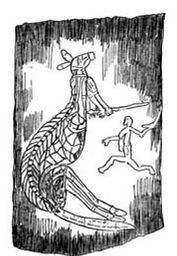63
Australia The Outback
THE DEAD HEART. THE GHASTLY VOID. THE NEVER-NEVER. ALL are fitting nicknames for the Outback, Australia’s unforgiving interior, yet they betray the landscape’s vast beauty—or, in the case of Uluru-Kata Tjuta National Park, its majesty. Here resides the world’s largest monolith, a rock so massive (2.2 miles long, 1.5 miles wide, and 1,141 feet high) it was once thought to be a meteorite. (Geologists have since identified it as a single piece of arkrose, aged 700 million years.) Its color changes with the sun, from ocher to burnt sienna to orange to blood red to finally—at sunset—a deep purple that sends visitors racing to the parking lot to climb atop the roofs of their cars and snap photos like crazy. When night falls, the monolith becomes a mammoth void that blocks the rising moon and the stars. Some swear it awakens then.

The monolith has a few nicknames of its own—The Rock, Ayers, and Uluru—and, like the Outback itself, the term you use says something about you. Those who come to climb call it Ayers Rock, after a nineteenth-century South Australia governor who never actually visited it. Local Aboriginal tribes, meanwhile, say Uluru, a name of reverence. Known as Anangu, or “the people,” these Aborigines are believed to have lived alongside Uluru for the past 20,000 years, but a British explorer is credited with “discovering” it in 1872. After years of tension, control of the monolith was returned to the Anangu in 1985. Among other things, they now determine its hours of operation, so ensure it is open before heading out, as anything from strong winds to special ceremonies can inspire a shut-down. The Anangu also request that visitors not climb Uluru, due to its spiritual significance.
A great way to visit the park’s hidden treasures, such as cave paintings and sacred watering holes, is with Anangu Tours, a company owned and operated by local tribes. The guides hold demonstrations on ancient bush skills like starting a fire without matches and carving wooden tools out of stones, and share traditional legends of figures like the Blue Tongue Lizard Man. You might even get a tasty bush snack. Drop in the Maruku Arts & Crafts Center afterward, as it sells music sticks, bowls, boomerangs, spear throwers, and desert animals carved from river red gum root. During Australia’s summer, November to March, temperatures at Uluru regularly break 100 degrees; to escape the heat, go between June and September (but bring a sweater, as it grows chilly at night).
Two hundred and eighty miles from Uluru is Alice Springs, home of the National Pioneer Women’s Hall of Fame. In addition to its artifacts and reference library, the museum is actively gathering stories and photographs of pioneering Australian women for its “Herstory Archive.” Add an entry about your favorite Aussie heroine.

